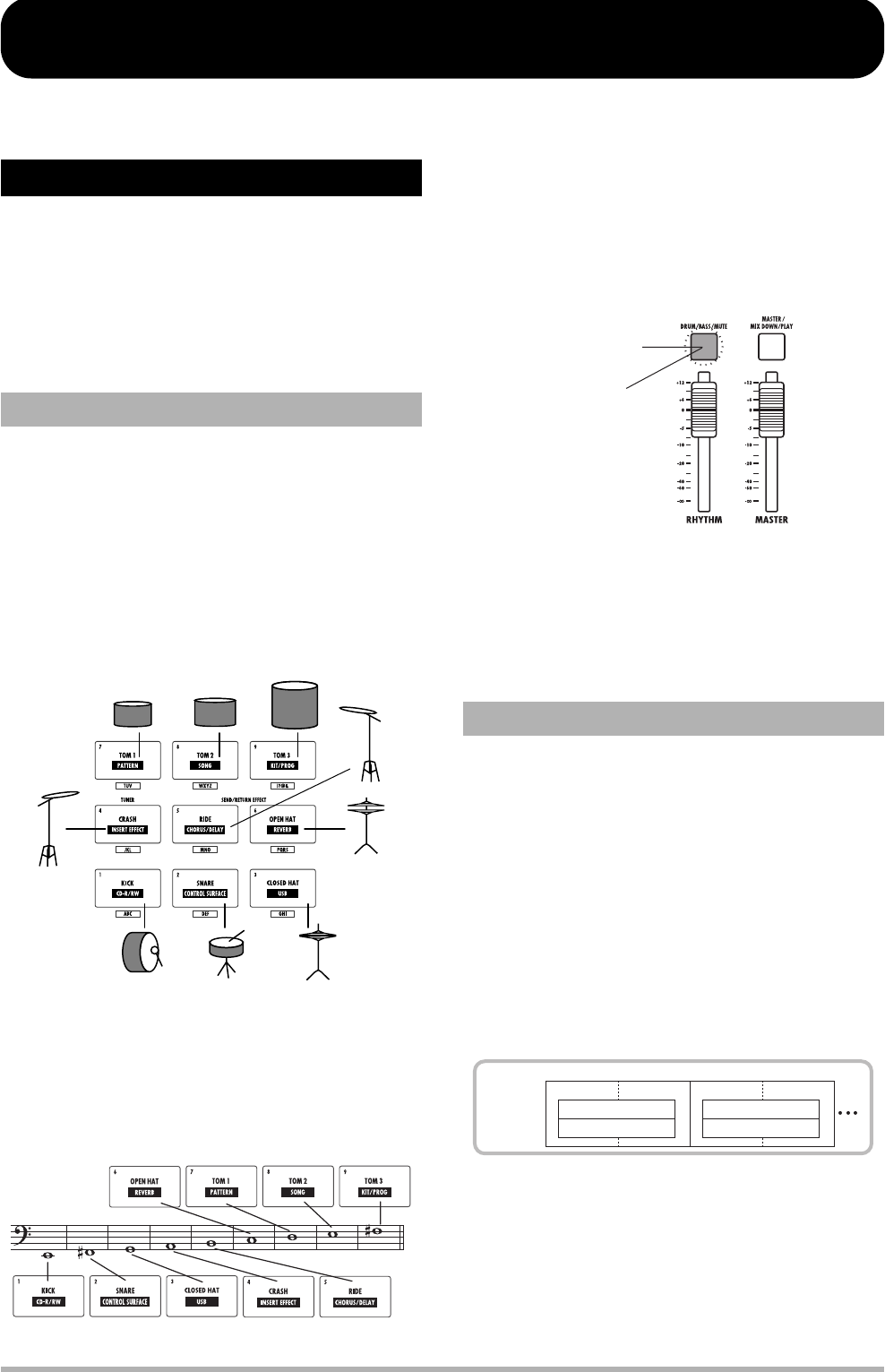
ZOOM HD8/HD16
87
Reference [Rhythm]
This section explains the functions and operation of the built-in rhythm section of the HD8/HD16.
The rhythm section of the HD8/HD16 uses internal drum
sounds and bass sounds to generate rhythm accompaniment. It
can be used instead of a metronome by playing simple rhythm
patterns, or you can program a sequence of rhythm patterns
and chord progression into the rhythm accompaniment for an
entire song.
The sound created by the rhythm section is produced by a
“drum kit” and a “bass program”.
The drum kit is a combination of 27 drum/percussion sounds
(samples) such as kick, snare, hihat, and conga. You can select
one of these drum kits and play it manually with the pads on
the top panel, or you can use it as a sound source for rhythm
accompaniment. You may also create your own drum kit,
which gives you the option of using on samples on a CD-ROM
disc or parts of an audio track as building blocks.
A bass program is a single bass sound, such as an electric bass
or acoustic bass, which can be played as a scale with the pads
on the top panel or via an external MIDI keyboard. The HD8/
HD16 has 11 bass programs. You can choose one of these and
play it manually or use it as a sound source for pattern play.
The rhythm section of the HD8/HD16 lets you select a drum
kit or a bass program and play it with the pads. You switch the
sound with the [RHYTHM] status key. When the key is lit in
green, the drum kit is selected. When it is lit in red, the bass
program is selected.
The output signal from the drum kit (drum track) and the
output signal from the bass program (bass track) are sent to the
internal mixer, where you can independently adjust the
volume, panning (balance), EQ, and other parameters.
A project can contain accompaniment patterns with drum/bass
performance data for up to 99 measures each. This is called a
rhythm pattern. The HD8/HD16 has 511 such patterns. Inside
each rhythm pattern, the area that holds the drum performance
data is called the “drum sequence”, and the area that holds the
bass performance data is called the “bass sequence”.
In the default condition, a project contains preprogrammed
rhythm patterns in numbers 000 – 472 and 509 – 510. You can
edit a portion of a rhythm pattern, or use an empty slot to create
an entirely original rhythm pattern. The rhythm patterns you
modify or create are saved on the hard disk as part of the
project.
About the rhythm section
Drum kits and bass programs
Rhythm patterns
Lit in green:
Drum kit
Lit in red:
Bass program
[RHYTHM] status key
[RHYTHM] fader
1234
PATTERN PATTERN
Rhythm
section
Drum sequence
Bass sequence
Drum sequence
Bass sequence


















